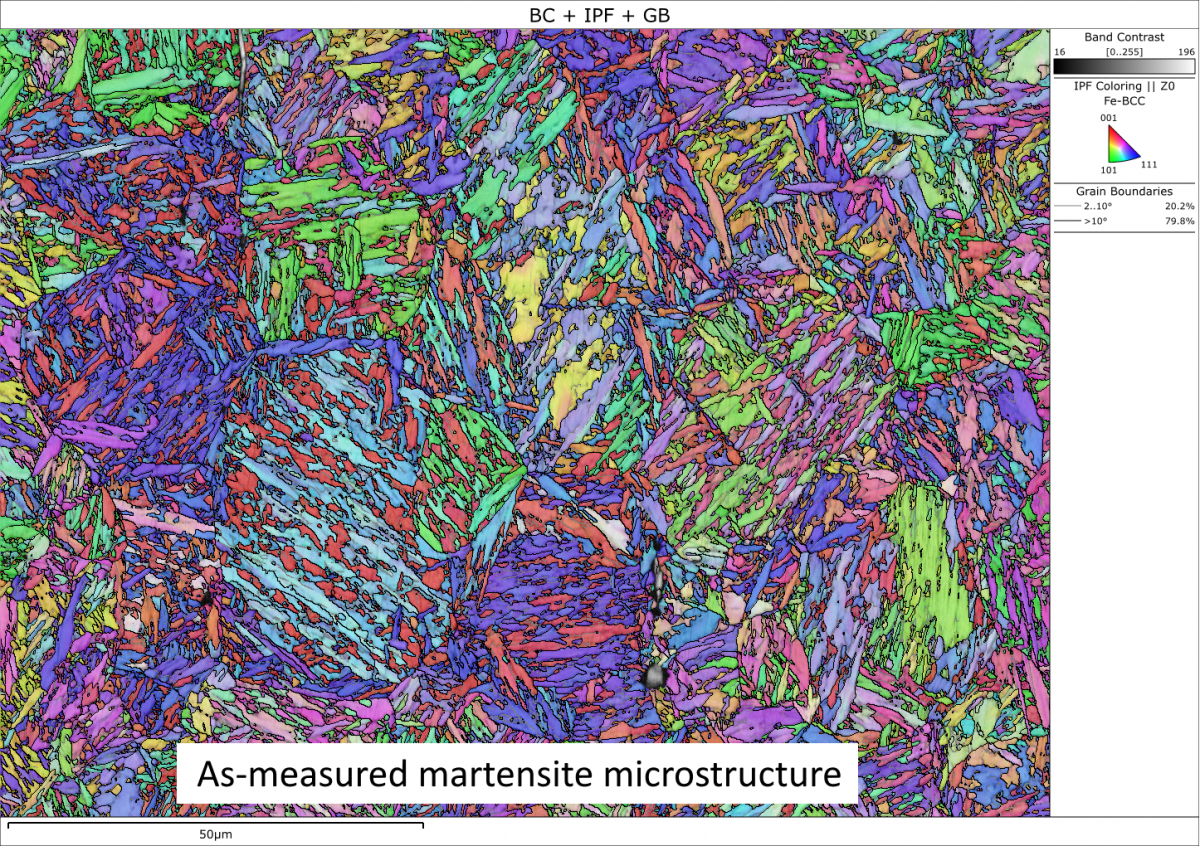Parent Grain Reconstruction
Electron backscatter diffraction (EBSD) is a technique that is commonly used to study the effects of phase transformations in materials. This can be beneficial in a number of research areas, including for determining the conditions during metamorphism of geological samples, or to assist in the refinement of processing conditions for the optimisation of properties in steels.
There are several different types of phase transformation. Diffusive transformations occur much more slowly and involve the diffusion of atoms relatively large distances within the atomic lattice. Many geological phase transformations are diffusive, as is the eutectoid decomposition of steel into pearlite: a mixture of ferrite (Fe-BCC) and cementite (Fe3C). Displacive (or diffusionless) transformations occur much more quickly, with the crystal structure changing through unit-cell distortions without any long-range motion of atoms. The transformation of austenite (Fe-FCC) to martensite on quenching is the most common example, but displacive transformations occur in many materials (e.g. Ti, Nb, Zr alloys). In a displacive transformation, there exists a specific orientation relationship between the crystal lattice of the parent (higher temperature) phase and that of the child (lower temperature) phase. Many of these relationships are well known and can be used to reconstruct the parent microstructure from the orientations of the resulting child phase. This is known as “parent grain reconstruction” and has been a topic of interest in EBSD for many years.
The process of parent grain reconstruction is relatively simple in some materials, such as in Ti-alloys, as the orientation relationship is well constrained, and there may be only a limited number of “variants” (orientations of the child phase that derive from a single parent orientation). In steels, however, there are many possible theoretical orientation relationships between austenite and martensite, and these assume parallelism between the (111) planes of austenite and the (011) planes of martensite. However, in reality, there is rarely true parallelism, and the actual relationship is often a few degrees away from one of the theoretical relationships. This makes reconstruction of the parent austenite microstructure more challenging, with success dependent on some refinement of the orientation relationship.
There exist many publications proposing different approaches to parent grain reconstruction using EBSD data, including (but by no means limited to):
- M. Humbert and N. Gey, The calculation of a parent grain orientation from inherited variants for approximate (b.c.c.-h.c.p.) orientation relations, J. Appl. Crystallogr. 35 (2002) 401–405.
- C. Cayron, B. Artaud and L. Briottet, Reconstruction of parent grains from EBSD data, Mater. Charact. 57 (4–5) (2006) 386–401.
- G. Miyamoto, N. Iwata, N. Takayama and T. Furuhara, Mapping the parent austenite orientation reconstructed from the orientation of martensite by EBSD and its application to ausformed martensite, Acta Mater. 58 (19) (2010) 6393–6403.
- C. Ranger, V. Tari, S. Farjami, M.J. Merwin, L. Germain and A. Rollett, Austenite reconstruction elucidates prior grain size dependence of toughness in a low alloy steel, Metall. Mater. Trans. A-Phys. Metall. Mater. Sci. 49A (10) (2018) 4521–4535.
- S. Cluff, E. Homer, T. Nelson, R. Song and D. Fullwood, Crystallographic reconstruction of parent austenite twin boundaries in a lath martensitic steel, IOP Conf. Ser Mater. Sci. Eng. 375 (2018) 012012.
However, in AZtecCrystal the bulk of the parent grain reconstruction tool is based on work carried out at the National Taiwan University and published in the following paper:
- C.-Y. Huang, H.-C. Ni and H.-W. Yen, New protocol for orientation reconstruction from martensite to austenite in steels, Materialia 9 (2020) 100554.
Huang and colleagues devised a 3-step process for parent grain reconstruction, involving the refinement of the orientation relationship, the measurement of the child grains (“orientation coalescence”), and then a voting process to determine the most likely parent phase orientation. This is schematically shown in the image below, but full details are available in their published work:
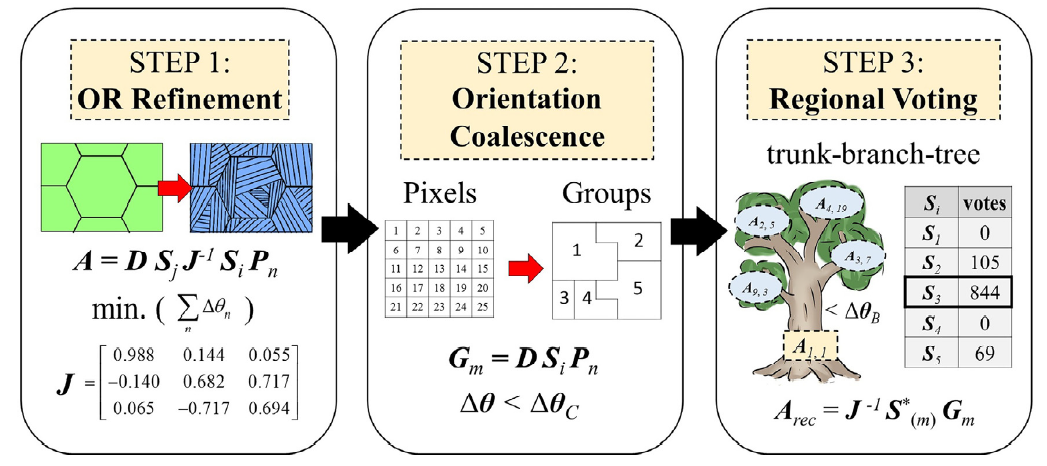
Graphical representation of the 3-step parent grain reconstruction approach of Huang et al. (2020)
Although the OR refinement step in AZtecCrystal is not necessary for good reconstruction in all datasets, it does significantly improve the robustness of the reconstruction in martensitic steels. This is shown in the maps below:
Orientation maps showing the benefit of orientation relationship refinement for the successful parent grain reconstruction in martensitic steel
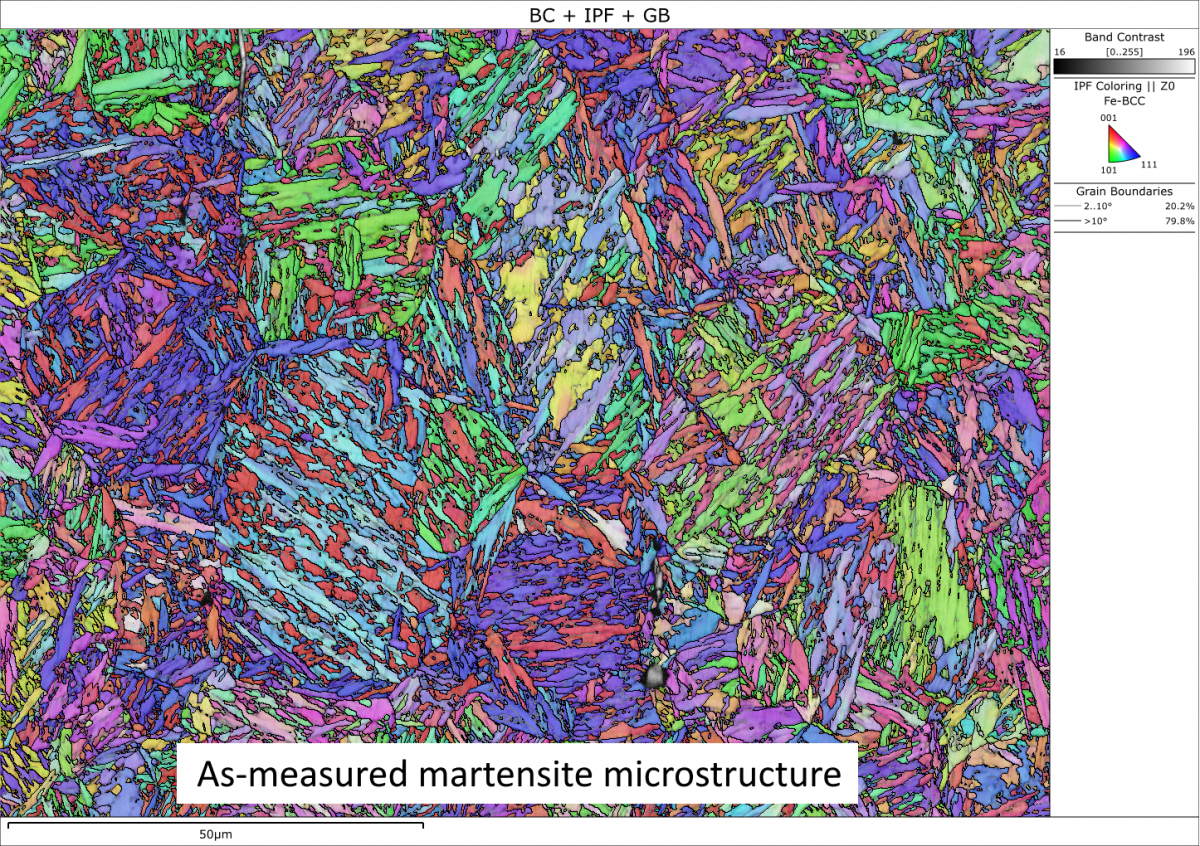
Original martensitic microstructure
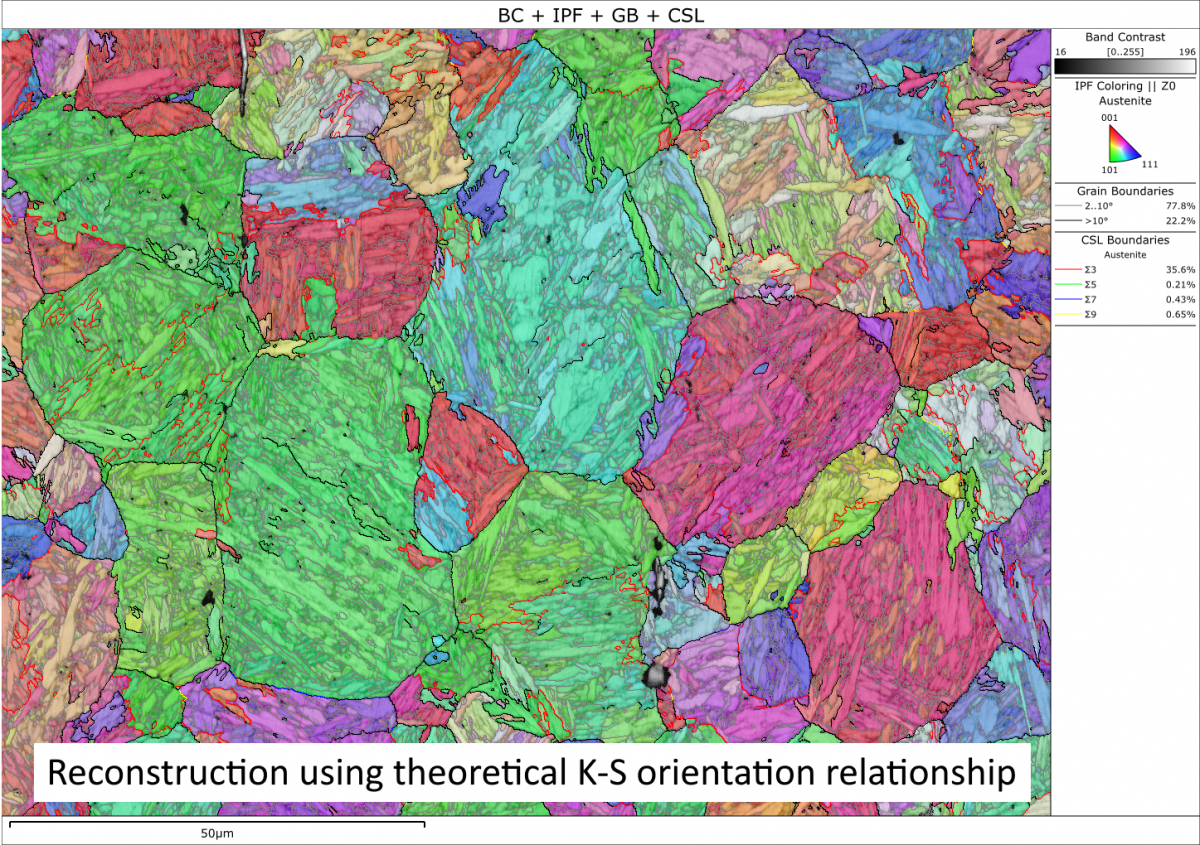
Reconstruction with theoretical Kurdjumov-Sachs orientation relationship
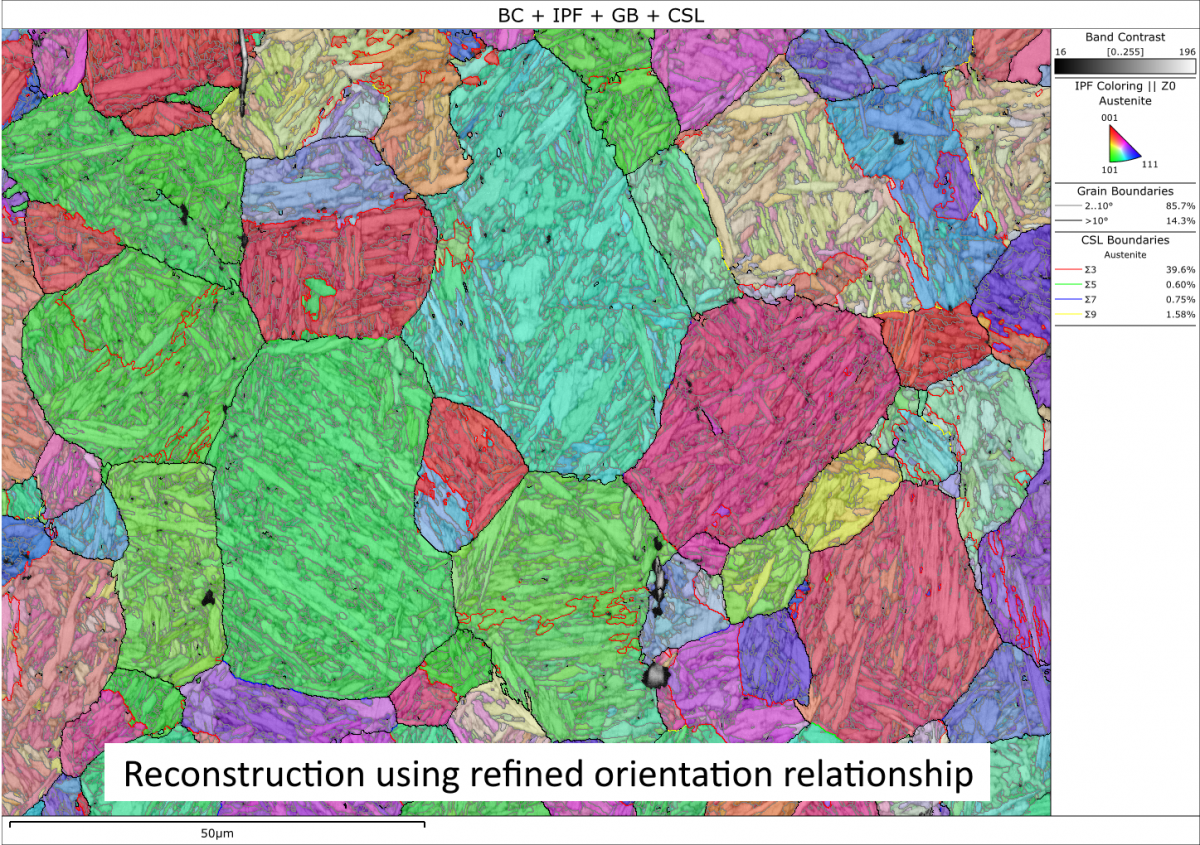
Improved reconstruction with refined orientation relationship
The benefits of orientation relationship refinement for parent grain reconstruction in steels are well described in the work of Nyyssönen and colleagues:
- T. Nyyssönen, M. Isakov, P. Peura, et al. Iterative Determination of the Orientation Relationship Between Austenite and Martensite from a Large Amount of Grain Pair Misorientations. Metall Mater Trans A 47, 2587–2590 (2016).


